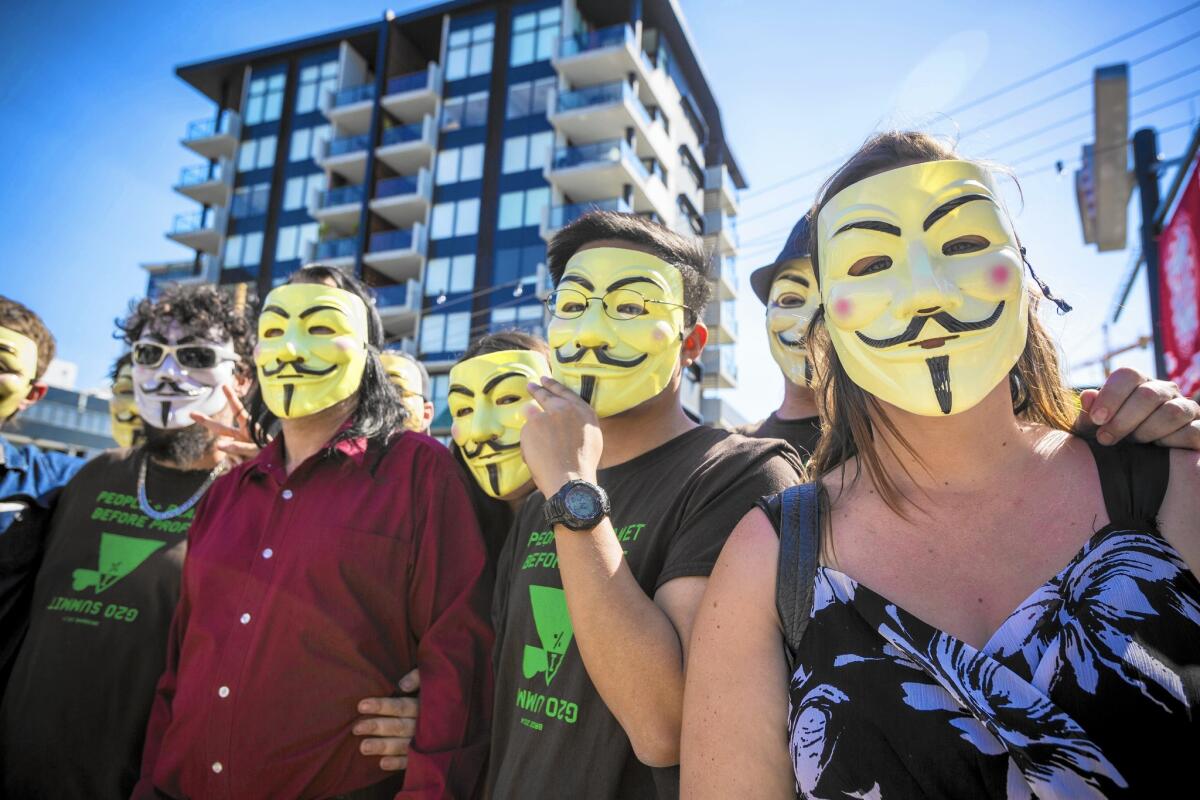The many faces of Anonymous

Behind the grinning, mustached Guy Fawkes mask of the hacktivist group Anonymous, numerous faces and groups shift its shape as they select targets including companies, and Arab governments.
Anthropologist Gabriella Coleman has studied Anonymous for six years, watching the online activists as they morphed from cybervandals into more of a political movement.
Starting with a “deviant style of humor” that targeted anyone and anything, Anonymous has grown into a force feared by both companies and governments. Its members regularly take websites offline and steal information to expose secrets.
In her new book, “Hacker, Hoaxer, Whistleblower, Spy: The Many Faces of Anonymous,” Coleman reveals the group in all its complexity. She currently holds the Wolfe Chair in Scientific and Technological Literacy in the art history and communication studies department at McGill University in Montreal.
The hacktivists who attack under the moniker of Anonymous have barely any organizational structure, little leadership and no consistent political program. Their main refrain is “Anonymous is not unanimous.”
Coleman attempts various definitions of Anonymous, from the “quintessential anti-brand brand” to part of a growing “politically engaged geek family.”
The group prioritizes the collective over the individual, shaming anyone who seeks personal credit, and tends to back the little guy over the big organization. To have such influence with so little organization is a “minor miracle in the annals of political resistance,” she says.
The story is brought alive by the chat rooms that Coleman was allowed to watch, which show how members communicate at key times — sometimes voting on targets, arguing ferociously about moral direction and often showing how ordinary they are.
When discussing targets in the Tunisian government, one hacktivist pops off to make “fresh tea.” Another time, one engages Coleman in a discussion about gluten-free cooking.
She stresses how the use of pseudonyms enables cooperation that might be hard to achieve otherwise: Hackers range from a Puerto Rican part-time drug dealer in a New York housing project to a British soldier in Iraq with an online female identity.
But the access that Coleman received bred a closeness that could color her conclusions.
She readily admits her sympathies with the group, even dedicating the book to “those who have donned the mask in the past, those who still dare to make a stand today, and those who will surely rise again in the future.”
She has played the role of a spokesperson for the group, has petitioned on its behalf and says becoming “so entangled” with the subjects of a study has long been normal in anthropology.
Another weakness is that she avoided chat rooms where much illegal activity was discussed, fearing she would be seen by law enforcement as complicit in the group’s actions.
This is clearly a challenge for anyone writing about illegal activities, but one wonders whether — despite the years of following the group — she saw the full picture.
“Hacker, Hoaxer, Whistleblower, Spy,” published by Verso, will leave few as enchanted by Anonymous as Coleman clearly is.
Even so, this in-depth account might leave readers in awe of the sheer scope of the group and how much it has achieved while shunning the traditional trappings of leaders, hierarchy and individual fame-seeking.
Hannah Kuchler is a San Francisco-based correspondent for the Financial Times of London, in which this review first appeared.
More to Read
Inside the business of entertainment
The Wide Shot brings you news, analysis and insights on everything from streaming wars to production — and what it all means for the future.
You may occasionally receive promotional content from the Los Angeles Times.










